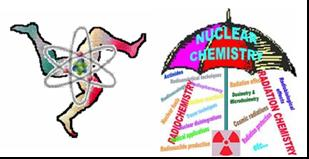Speaker
Mrs
Gözde Sarican
(Ege University, Faculty of Science, Department of Chemistry, Division of Nuclear Chemistry, Bornova, Izmir 35100, Turkey)
Description
Tyrosine is one of the 20 standard amino acids commonly takes place in the structures of animal proteins and it is required for normal functioning in humans and found in most proteins, for example in insulin. It is converted from the essential amino acid phenylalanin in the human metabolism and is a precursor of adrenaline, noradrenaline, dopamine, thyroid hormones, melanin, etc. In humans, the L-isomer of tyrosine which is the only form, that is involved in protein syntheses. However, tyrosine is considered to be a non-essential amino acid since it does not have to be taken in with the diet, but can be synthesized by the human body from chemical reactions of phenylalanine. Tyrosine is converted into dopamine and norepinephrine. Phenylalanine and tyrosine are sometimes prescribed as antidepressants, usually in combination with other herbal nutrients. In last decade, radiolabeled L-tyrosine with 123I, 125I, 18F, 11C has been subjected in interesting researches in nuclear medical applications. For example, 11C labeled L-tyrosine was used for PET visualization and quantification of protein synthesis rate and 18F radiofluorinated o-(2-18F-fluoroethyl)-L-tyrosine has showed a clinical potential in brain tumor diagnosis, 123I-L-tyrosine showed a long tumor retention in RIM rhabdomyosarcoma tumor-bearing Wag / Rij rats, 6-125I-L-tyrosine has been incorporated into the literature to be a new radiopharmaceutical which is useful in assessing cerebral amino acid transport mechanism and quantifying metabolically active DOPA decarboxylase. In this context, the radioiodination processes have become important tools for preparation of radioiodinated L-tyrosine with different iodine radioisotopes and in this study, the radioiodination of tyrosine using an isotopic exchange technique between 131I ion and 127I atom of 2-iodo-L-tyrosine has been investigated as a new radioiodination procedure of L-tyrosine. This isotopic exchange reaction was realized in water at 95 ºC in about 30 min. Then, water was evaporated to dryness and it was solved in water again. In this way, the ioiodination yield was found to be about 90 - 95 %.
Author
Mrs
Gözde Sarican
(Ege University, Faculty of Science, Department of Chemistry, Division of Nuclear Chemistry, Bornova, Izmir 35100, Turkey)
Co-authors
Mrs
Cigdem Cetin
(Ege University, Faculty of Science, Department of Chemistry, Division of Nuclear Chemistry, Bornova, Izmir 35100, Turkey)
Mrs
Gülcan Ünak
(Ege University, Faculty of Science, Department of Biochemistry, Bornova, Izmir 35100, Turkey)
